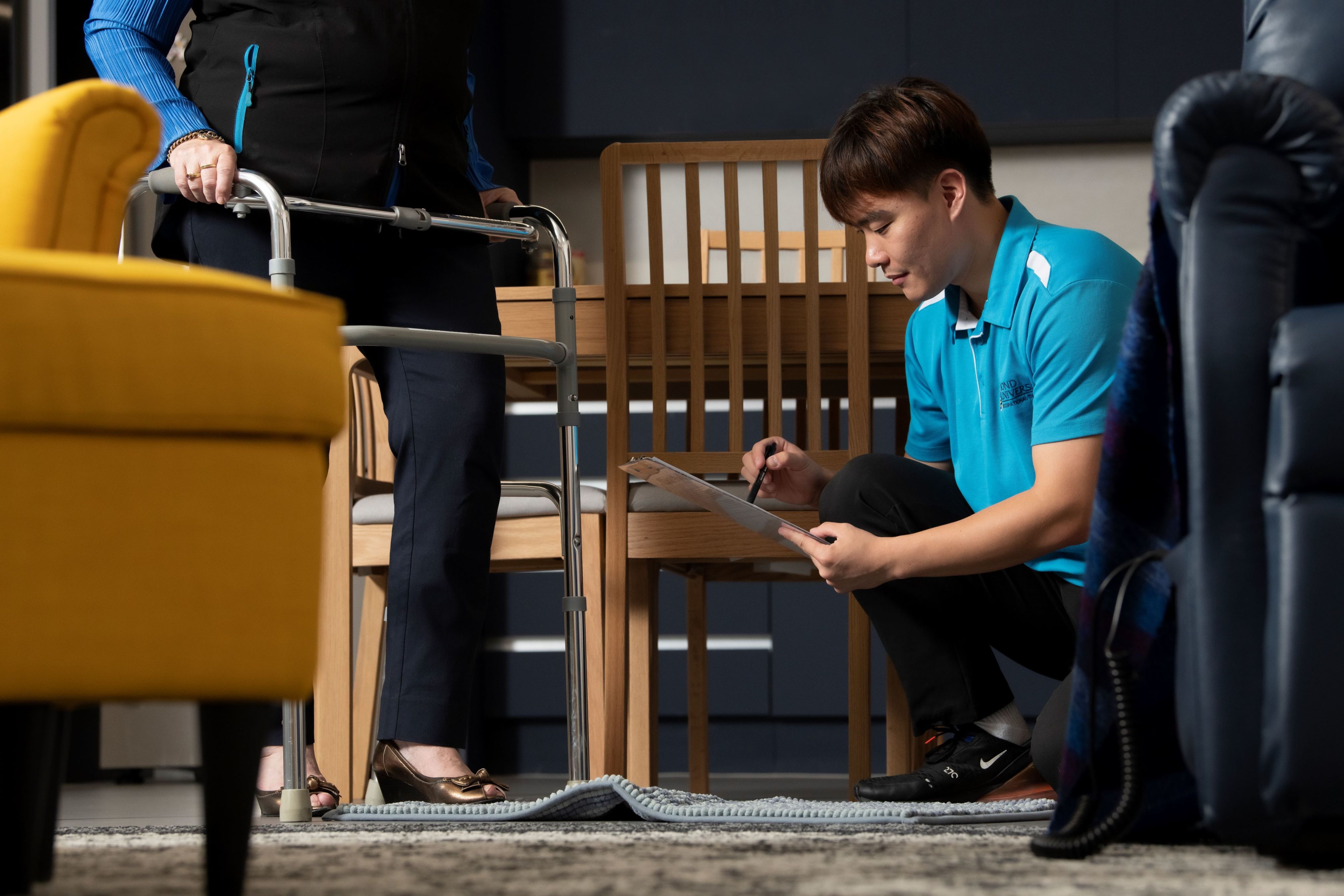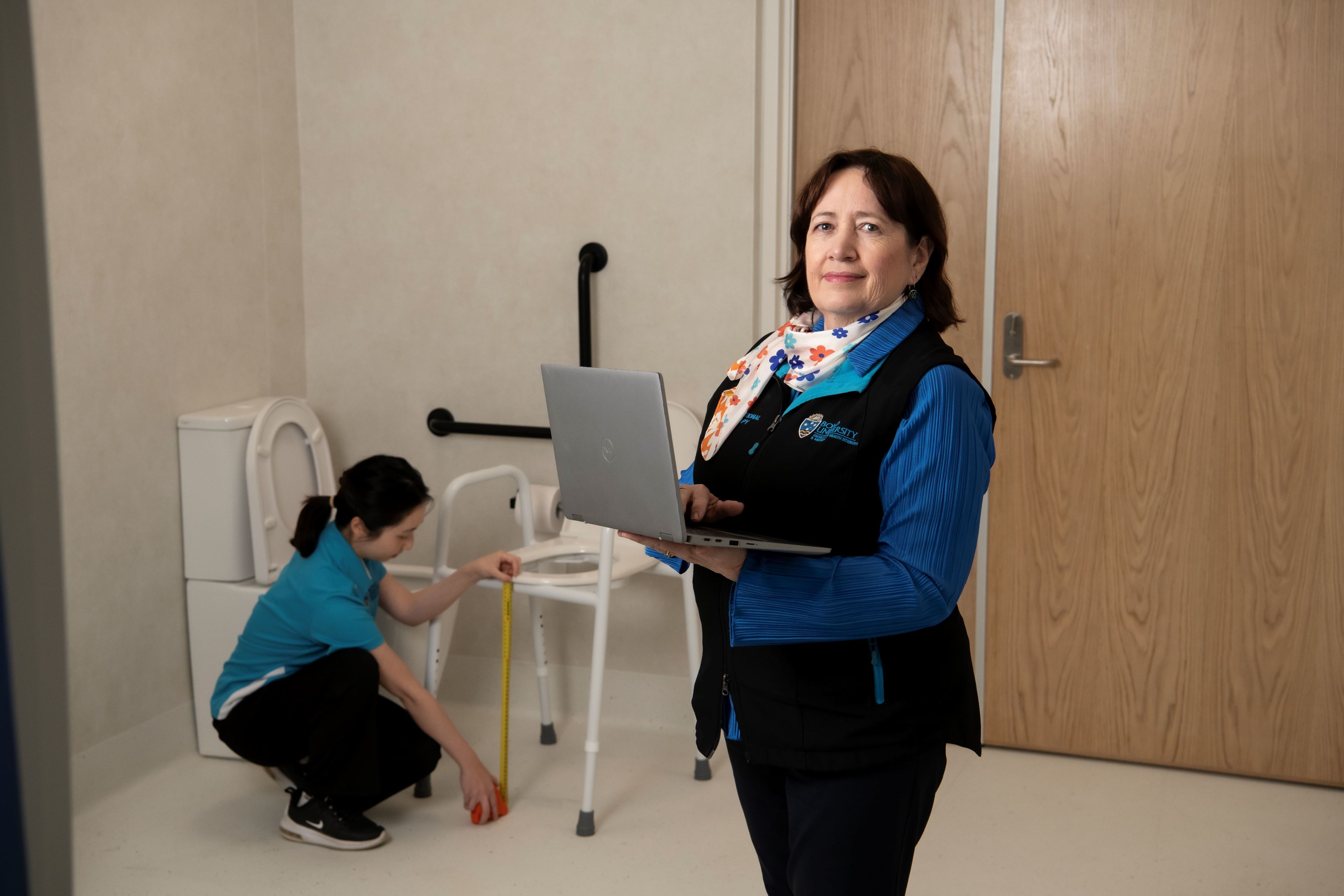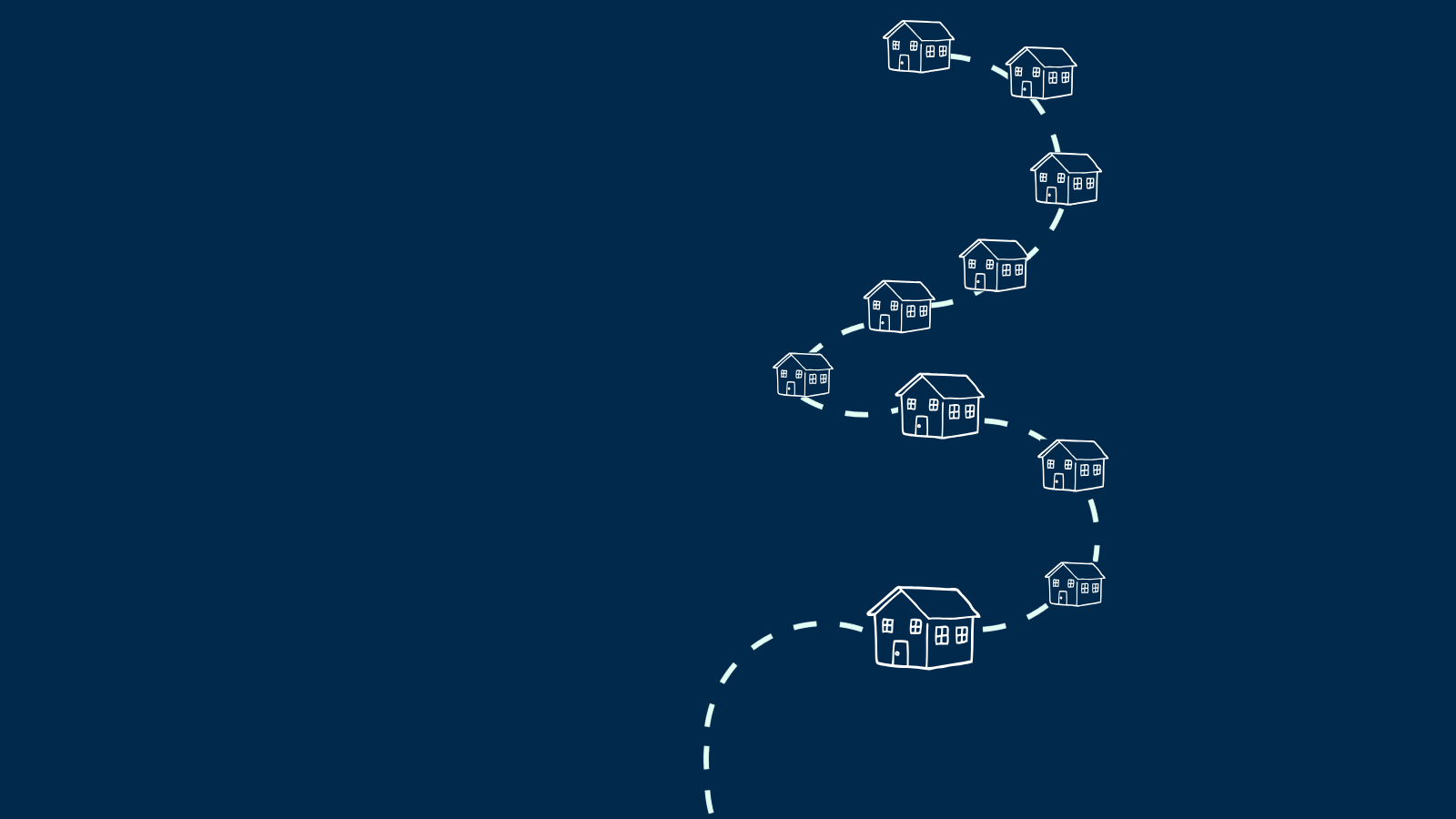
Revolutionary three-dimensional room-scanning technology borrowed from the construction industry is being explored to improve home safety — and reduce hospital stays — for older people and those with mobility challenges.

Bond University researchers are assessing how Light Detection and Ranging (LiDAR) scanners, combined with the latest smartphone cameras, can be used to map rooms and potential hazards in minutes, getting patients home sooner. It’s a job currently performed by occupational therapists who physically visit households to record everything from the height of toilets and stairs to the width of shower doors, while assessing safety risks.
“Depending on the location of the home, this could take an occupational therapist an entire day. Meanwhile, patients can’t leave hospital because their home environment is unknown,” says Bond University Professor Susan Brandis, who is leading the Home Alone Study. "It’s particularly challenging in rural and remote areas, where a four-hour ambulance journey might be required, only to find you can’t get the patient in the front door.
“We’re working to develop tools with broad international applications that intersect digital health, technology and engineering to streamline the process and make better use of scarce clinical resources. If we can prove it is safe and equal to — if not better than — existing methods, imagine the benefits. We’re facing an ageing population, people staying in their homes longer, and challenges recruiting health workers and getting services to remote locations.”

Professor Brandis, doctoral candidate Judith George and Dr Sally Fields, of Bond’s Faculty of Health Sciences & Medicine, are collaborating with Faculty of Society & Design construction experts Dr Rosemarie Rusch and Dr Johari Amar on the research.
A promising feasibility study conducted last year in 10 private homes, considering vastly different designs and health conditions, paved the way for the latest phase of research.
Professor Brandis says a two-year program is now assessing existing telehealth tools, developing a standardised checklist for occupational therapists, and a protocol for technicians using the technology.
The LiDAR system, which has its genesis in 1930s sonar technology, leans on sonar, radar, radio and light waves to produce a 3D image in a series of points coordinating length, height and depth.
“The protocol will ensure all the information required to assess if someone is safe to go home is captured in the digital image,” says Professor Brandis.
“Unlike, say, real estate where it’s used for aesthetic walk-throughs, we want to know how cluttered the bathroom is, if you can reach the toilet roll holder and the height of the bed.
“It’s the same technology, but a much different context.”
Professor Brandis says her greatest frustration working as a hospital occupational therapist for 35 years was having patients come back after preventable falls at home.
“This technology has the potential to bolster the safety of patients returning after undergoing procedures such as hip replacements,” she says.



“It is very much about people and anything that keeps people safely in their homes and out of hospitals and aged care facilities is a good thing for the nation’s burgeoning healthcare system.”
“Various studies tell us there's an increase in mortality rates in people who have experienced a fall because of frailty, reduced muscle mass, neurological conditions and the ageing process.
“The same studies tell us the risk of a post-discharge fall increases after the hospitalisation of older adults, which can lead to a myriad of other health consequences, and that’s exactly what we have set out to avoid.”

Professor Brandis says the current system, where an occupational therapist visits a home, is time-consuming and reliant on availability. While some situations require a face-to-face assessment, technology may be appropriate to screen homes to identify complex and high-risk settings.
“This technology allows us to partner with locally based businesses, and possibly technologically capable family members, to capture the data,” she says.
“While we’re focusing on its use for discharge and safety planning, the potential is phenomenal.
“Those who have had an accident with a long recovery time could use 3D modelling and virtual reality technology to practice getting around their home.”

Professor Brandis says the integrity of the research was always top of mind.
“We have full ethical overview of our research; the risk of working with vulnerable people and a novel intervention has influenced our research design,” she says. “Unlike Kevin’s house in the movie, our Home Alone study is out to make sure everything is absolutely safe and there’s not a trap in sight.”
This article originally appeared in The Arch edition 33.
Original thinking direct to your inbox
Stories from Bond



